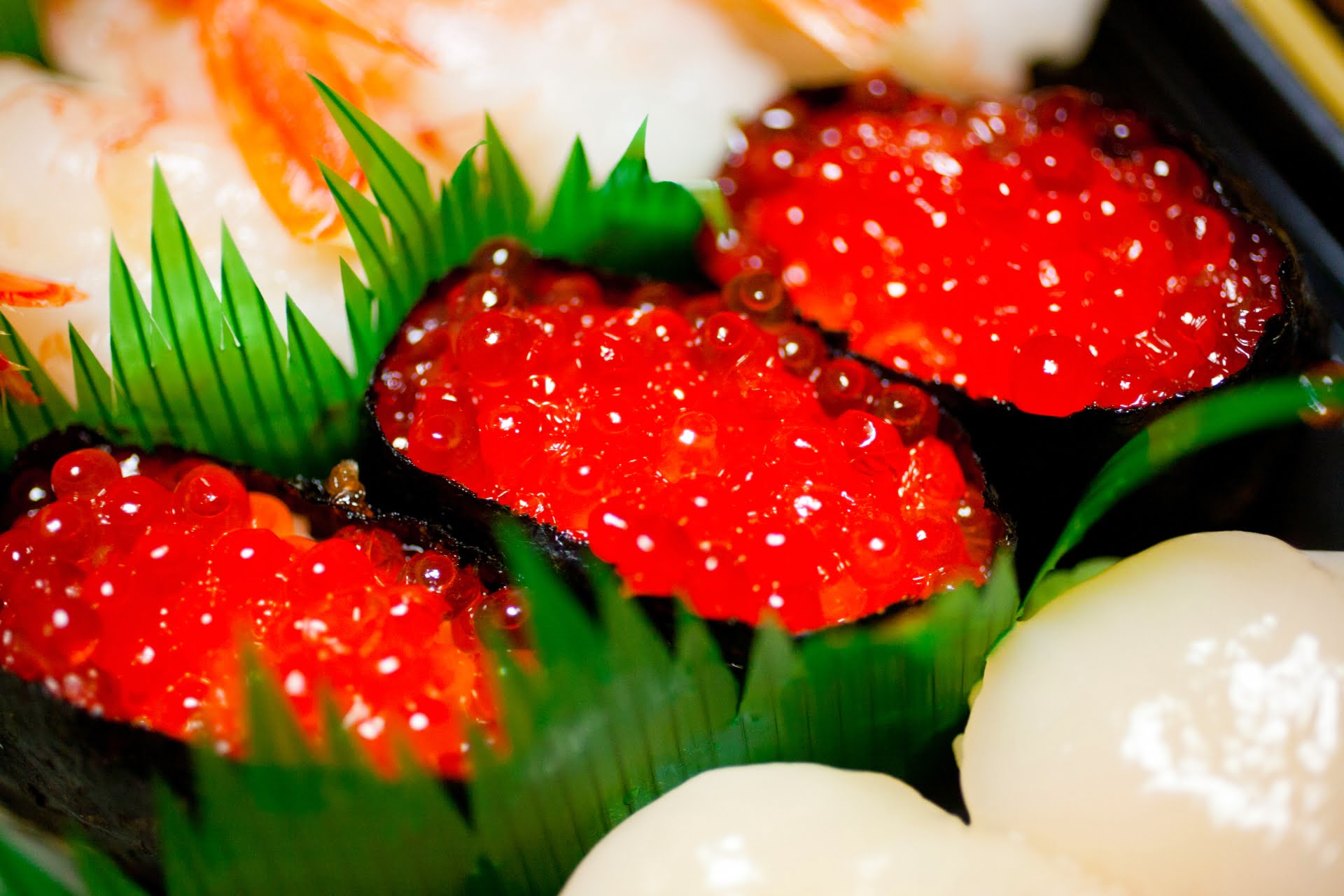If you have paid attention to Japanese food, you may find a very interesting thing: in sushi and Japanese bento (such as ekiben, the station bento, that you can often buy at the station), you often see a green leaf-shaped thing, such as that in this picture.
What exactly is this thing? What is it called? Why put in sushi and bento and other food?
What is it?

In fact, this thing in Japanese is called バラン(Baran), some people call it ハラン(Haran), said to come from the Chinese word “Maran”(a kind of orchid). About why there are two pronunciations, it relates to the Japanese language in the creation of the word pronunciation changes.
Japan Pocket Wifi Rental
UNLIMTED DATA SIM CARD
Japan Travel Prepaid SIM card
Why is it used in food?
There are two main purposes to use Baran in Japanese cuisine.
- To prevent food from staining or tainting each other
- As a decoration for food
In other words, Baran is used as a physical “divider” between foods, and because it has a bright color and beautiful appearance, and Japanese food is often lacking in green due to the lack of vegetables, it can be used as a green garnish to make bento look more delicious.
Is this the way it was from the very beginning?
In the beginning, people (especially sushi chefs and bento cooks) used the leaves of the orchid itself, cut them up, and put them directly into their dishes. However, using fresh plants directly can be troublesome at times: if left for a long time, the flavor of the orchid itself will seep into the food; moreover, the leaves of the orchid cannot be picked at any time of the year or anywhere, so they cannot be used anytime you want.

As time progresses and technology develops, people start to think about alternatives to fresh orchids. What is food safe, no special smell, and can be obtained anywhere, anytime?
People focused their attention on plastic.
At that time, thin plastic had already started to spread to the Japanese people. A sushi chef suddenly realized that this could replace Baran as the material that separates different kinds of food.
The first attempt was to insert the sterilized plastic directly between the dishes. The plastic was safe and did not have its own odor, and due to industrialization, it could be produced in large quantities, so the cost-performance ratio was very high.
The plastic itself is white, and if it is thin enough, it can become translucent or even fully transparent. But what about the original green color of Baran?
Therefore, due to the need for color, craftsmen modified the thin plastic to give it color, and on the basis of keeping three sides smooth so that it is easy to contact with the lunch box to ensure complete isolation from food to food, the side facing upward was processed into a jagged shape like a real leaf of the orchid, which became what we see now.

Since it is not a real orchid, people named this new product “Artificial Baran (artificial orchid)”. Nowadays, considering the length of the word and the difficulty of pronunciation, the word “artificial” is slowly omitted from the Japanese language, leaving only “Baran (バラン)” at the end, and this name has been used until today.
There is more than one kind of Baran ……?
In fact, although this kind of physical separator is called Baran, the leaves of Baran are not the only ones that can be used as a separator for cooking. Among the other types, the most well-known is the bamboo leaf.
This is especially true in the world of sushi cuisine. Bamboo leaves are used to wrap sushi in order to prevent picking up the odor of each other, to make it easier to transport, and to hold the food without touching it directly. In addition, bamboo leaves are also used to achieve antibacterial effects. For example, when preserving sushi containing fish, bamboo leaves are used to wrap the sushi to improve the preservation effect.
In modern times, due to the widespread use of plastic wrap, there has been a recent trend of “Baran is useless”, which calls for the abandonment of Baran in food.
Some people think that plastic wrap or other materials can also be a good divider instead of Baran..
Others say, “What does it matter if they are separated or not, since they will all be eaten together in the end anyway?

However, Japan has not yet discarded the Baran in food, for reasons as below:
- ① habit
- ② cheap
- ③ there are people who specialize in the work of inserting Baran.
But anyway, a little green color in food also makes people feel good, doesn’t it?
Japan Pocket Wifi Rental
UNLIMTED DATA SIM CARD
Japan Travel Prepaid SIM card
